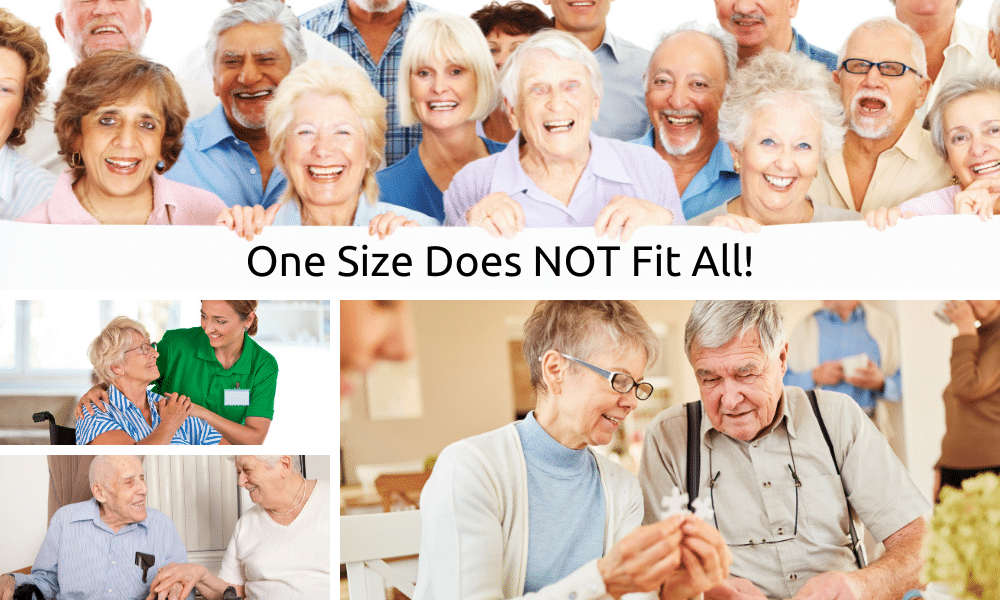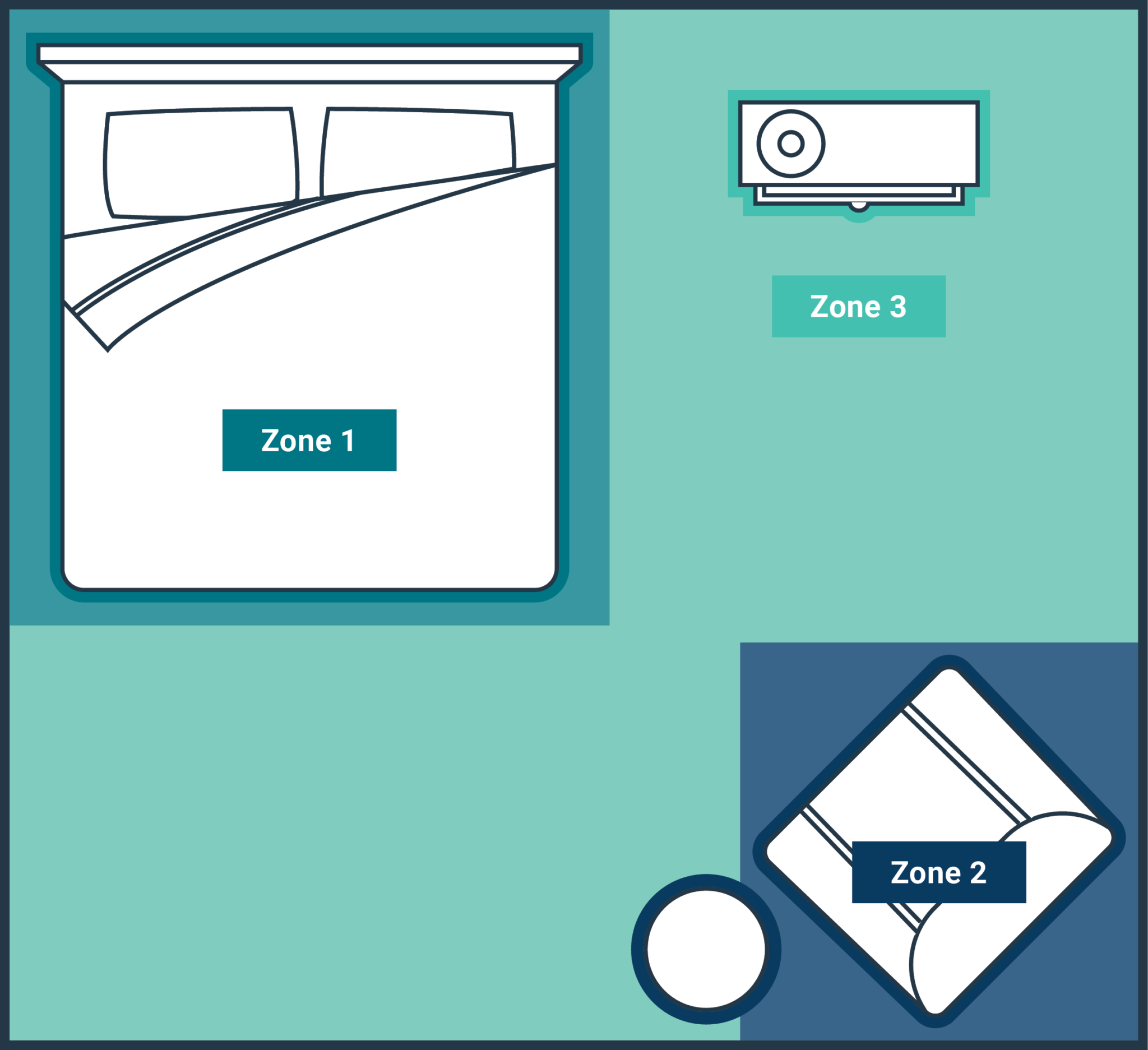Time really messes with our eyes!
When we’re young, our peepers are in their prime. Our lenses are clear and flexible, and our retinas are loaded with those light-sensitive cells called photoreceptors. This means we can see stuff super well.
But as we get older, our lenses start to turn yellow and get stiff – they call this presbyopia. Our pupils shrink down too, which means less light gets in. And those photoreceptors? They start to drop in number, and the nerves that take messages to our brain get thin. All of this adds up to a not-so-great visual system.

LIGHTING FOR THE ELDERLY
When One Size Does NOT Fit All!
Lighting for the elderly isn’t just about seeing things. Lighting also controls our internal clock, the circadian rhythm. This clock tells our body when to sleep, when to wake up, and even when to release hormones and digest food. Blue light, especially, helps us sync up with the day and night.
But guess what? As we age, we lose our knack for seeing blue light. Blame it on the yellowing lens and our retinas getting less sensitive. This can really mess up our internal clock, leading to sleep problems and other health woes that often bug older folks.
So, if you’re getting up there in age, you need more light to see stuff and keep your body clock ticking right. A 40-year-old needs double the light of a 20-year-old, and a 60-year-old needs a whopping four times as much as a youngster. Time changes a lot of things, including the way we see and keep time!
Should Customised Solutions Be Standard?
With an aging population and equally, an aging workforce, we certainly need to change up the lighting game!
Instead of one-size-fits-all, perhaps we need to make customised lighting the new norm?
Knowing that more mature folks need a bit more oomph when it comes to lighting this should be easy to achieve. As ‘aged’ lenses turn yellow, it becomes harder for them to see blue light. This can be fixed by using higher colour temperatures, like 5000-6500K. These are in the blue-white range and mimic natural daylight, which is awesome for keeping those body clocks on track.
Using lighting controls gives us a wide range of lighting tricks to call upon. Depending on the task at hand, you can use direct or indirect lighting. Don’t forget about dimmable lights – you can tweak how bright or soft the light is, depending on what you’re doing or the time of day.
When it comes to older eyes, they’re pickier. They don’t like shadows and flickering, so we need to keep lighting for the elderly even and steady. We should also match the lighting to their natural body clock. That means bright, blue-ish light during the day and softer, warmer light in the evening for a good night’s sleep.
But here’s the kicker – it’s not just about making things brighter. We need lighting that suits everyone’s unique needs when it comes to colour, space, and time.
It’s important that lighting controls in the workplace should allow for age-related differences, enabling sufficient light for older members of staff without creating discomfort for younger employees.
To make it happen, we’ve got to switch from boring, static lighting to dynamic systems that can change with us throughout the day.
Aged Care Facilities
When considering lighting for the elderly, we obviously need to cater for care facilities where residents may have all sorts of unique and challenging needs.
They could really use lighting that’s all about them, not some one-size-fits-all deal. At the same time, it is also important to allow for the needs of staff, and their work hours.
For instance, studies suggest that folks with dementia can do way better with lighting that matches their body clock. This could lead to better sleep, happier moods, and just an all-around better quality of life. However dementia care facilities likely have care staff on hand 24/7 on rotating shifts. Lighting in resident’s rooms will need to support the dementia patient’s sleep/wake cycle, but lighting at nurse stations, corridors etc may have very different requirements. Then service areas for staff such as kitchen, changing or common rooms, etc may need to respond to the sleep/wake cycle of each working shift.
To make this happen, we’ve got to change the way we design and set standards for lighting. We’ve got to ditch the old, generic approach and go for something more focused on people and what they need. That’s where Human Centric Lighting (HCL) comes in.
HCL isn’t just about making sure you can see well; it’s about your health, how you feel, and how much you can get done, no matter how old you are.
Getting HCL into action takes some planning, from the very beginning of building design, and it works for new places as well as fixing up the old ones. From picking the right lights to choosing the control systems, every part of the lighting design needs to be thought through carefully to fit what the folks using it need.
And nowadays, advanced technology like zencontrol’s DALI-2 (wired) or DALI+ (wireless) lets you change how bright the lights are, the colour of those lights, and when and where they shine – all based on what people need at different times during their day and where they’re moving around the building. It’s not just about lighting for the elderly but about lighting up life the right way!
How Can We Help?
Human-Centric Lighting considers three functions of light:
- Functional, which should positively impact eye comfort, and the user’s concentration and creativity;
- Emotional, provides a representation of the time of the day, helping create a feeling of safety and comfort;
- Biological (also referred to as Circadian), designed to support the wake/sleep cycle.
Installing a zencontrol system allows full colour-tuning for your building, not just tuneable white, but tuneable colour.
Circadian prescriptions can be created to change colour and intensity during the day or night. A zencontrol system can support up to seven different intensity and colour changes throughout a 24 hr period.
Local user control can be utilised to customise user comfort. Different levels of control can be provided dependent on requirements.
An integrated system of zencontrol tuneable switches and sensors can be installed, that measure CO2, VoCs, temperature, humidity and pressure. Lighting can be optimised to make your building more comfortable for its residents and staff.
zencontrol analytics can measure the effectiveness of your building and zencontrol Cloud allows you to track and visualise your buildings performance.
Beyond Lighting Control
An exciting new development for health or residential care facilities is the wide range of benefits that can be provided by the zencontrol thermal sensors.
This sensor has real-time presence sensing with DALI-2 or wireless connectivity, along with AI onboard, powering zone-based control and people counting.
One sensor can monitor up to 4 distinct zones e.g. the bed, armchair, and remaining space, enabling targeted alerts and lighting control. Without the compromise to privacy, or the huge expense of a camera-based system, care assistants can view at a glance whether a resident is in bed, sitting in their chair, or has ‘gone walkabout’.
If you’d like to find out how these new technologies may be of use to your organisation, please give us a call.



